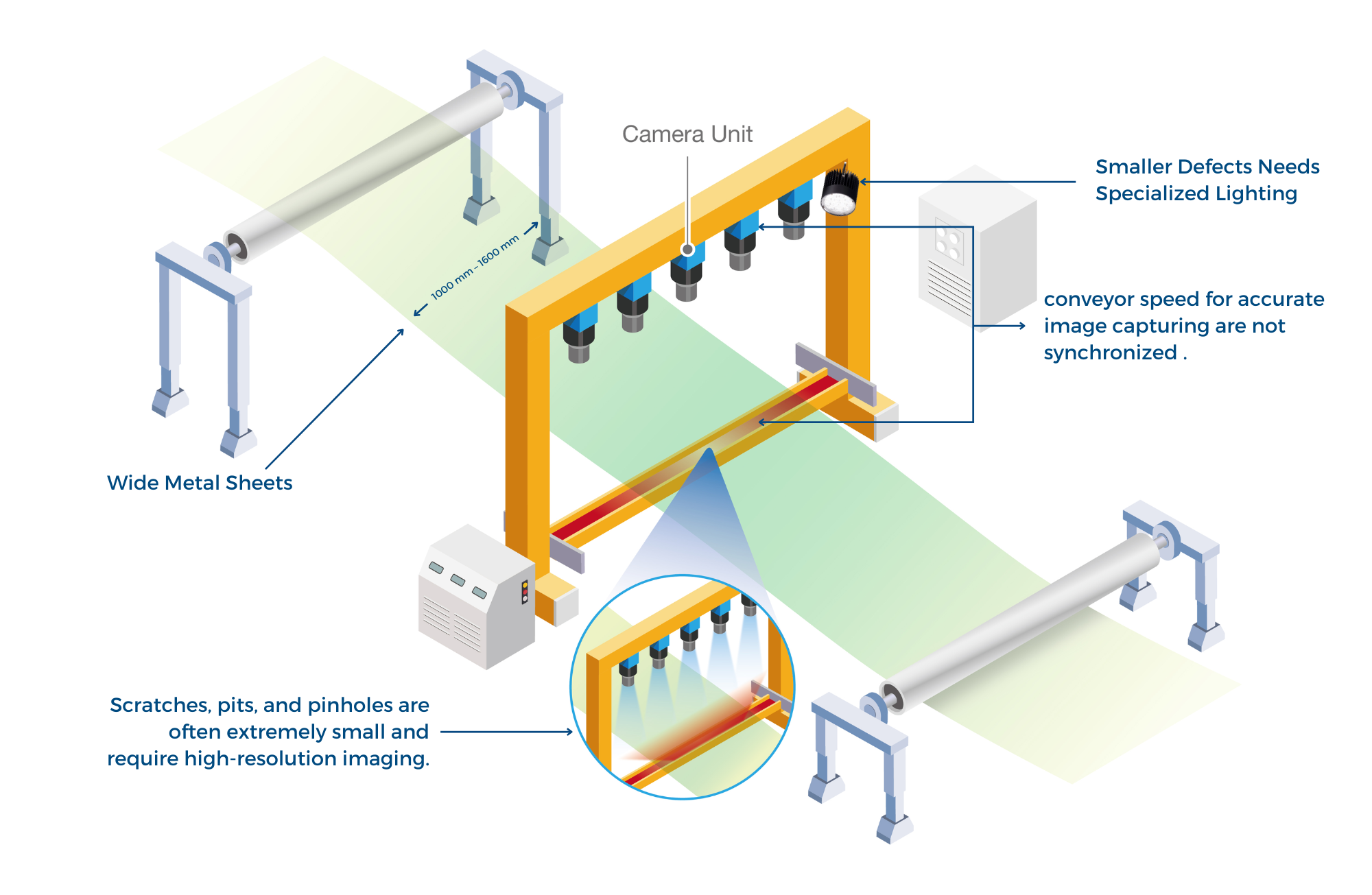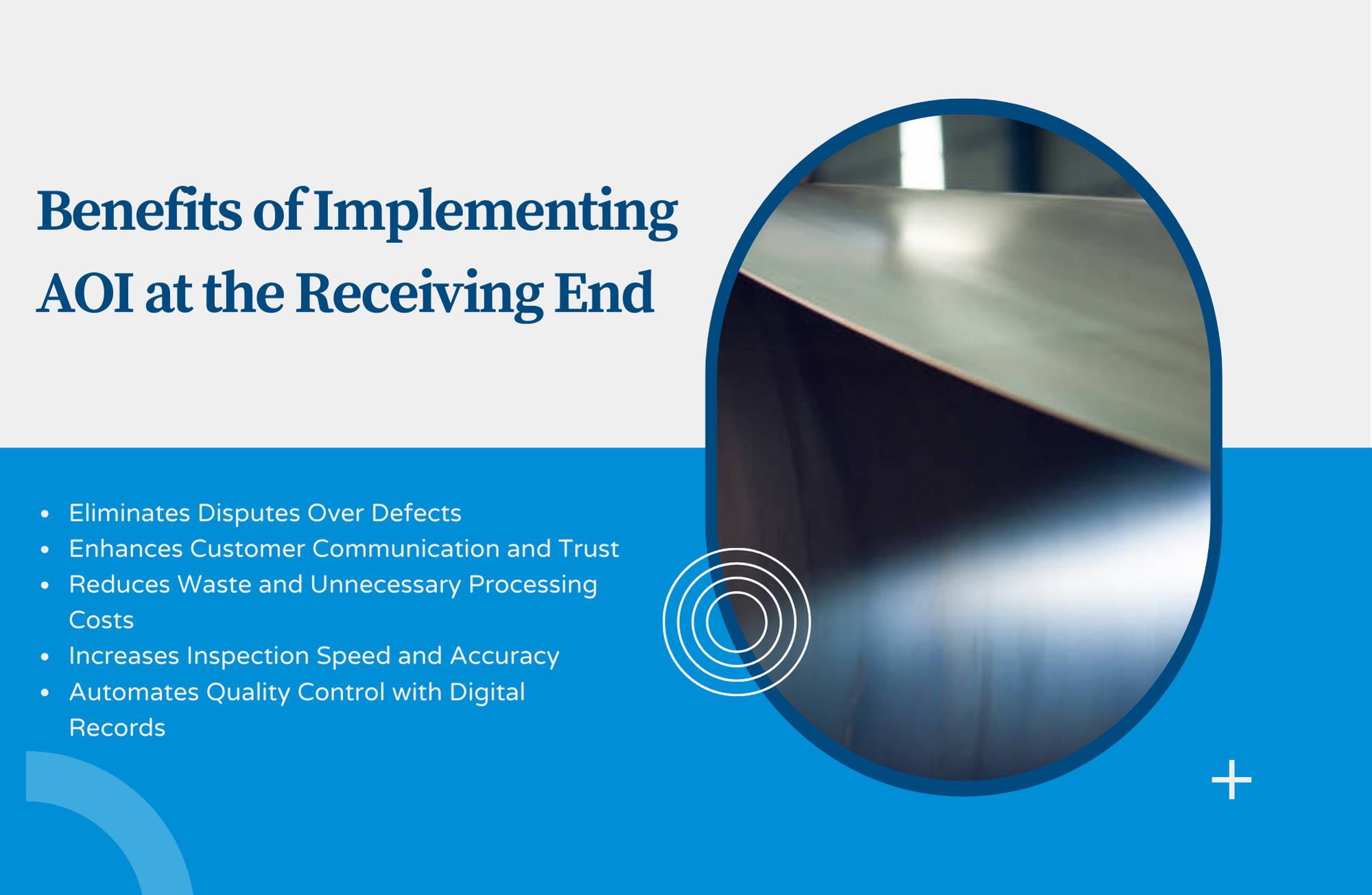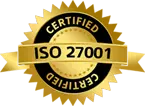Inspect metal sheet at the receiving end and document all the defects when they are arriving
Published on: Feb 11, 2025

Written by: Soumen das
Automated Optical Inspection (AOI) for Metal Sheet Inspection at the Receiving End
Steel sheet processing companies receive metal sheets from customers for further processing, such as cutting, stamping, coating, or surface finishing. These companies are responsible for ensuring that the processed sheets meet quality standards before returning them to customers. However, a significant challenge they face is customer complaints regarding defects that allegedly occur during processing.
In many cases, the metal sheets already contain scratches, pinholes, pits, or corrosion when they arrive at the processing facility. Due to a lack of inspection or reliance on manual inspection, companies do not have documented proof of pre-existing defects. Without this data, it becomes difficult to determine whether defects were present before processing or were introduced during processing.
To eliminate disputes, ensure transparency, and improve quality control, companies need an Automated Optical Inspection (AOI) system at the receiving end to inspect, document, and analyze metal sheets before processing begins.
 for Metal Sheet Inspection at the Receiving End.png)
Why Automated Inspection is Needed at the Receiving End?
- Avoid Disputes and Customer Complaints
- Document pre-existing defects in metal sheets before processing to prevent false defect claims.
- Improve Transparency with Customers
- Provide detailed reports and images of metal sheets upon receipt, ensuring mutual agreement on quality status before processing begins.
- Enhance Quality Control
- Monitor incoming metal sheets to detect and track defects such as scratches, pinholes, pits, and corrosion.
- Reduce Manual Inspection Errors
- Manual inspection is prone to errors and inconsistencies. AOI systems eliminate human subjectivity and provide consistent defect detection.
- Optimize Processing Decisions
- If a sheet arrives with severe defects, processing adjustments can be made to minimize waste or reject defective sheets upfront.
Challenges in Metal Sheet Inspection at the Receiving End
- Metal Sheets are Moving on Conveyor at Variable Speeds
- Inspection must be synchronized with the conveyor speed for accurate image capturing.
- Wide Metal Sheets (1000 mm – 1600 mm)
- In most cases the width of the sheets are 1000 mm or more and it can go up to 2000 mm. A single camera may not be sufficient to cover the entire width of the sheet.
- Detecting Micron-Level Defects (100 Microns or Less)
- Scratches, pits, and pinholes are often extremely small and require high-resolution imaging.
- Smaller Defects Needs Specialized Lighting
- To capture smaller defects high intensity lighting setup is needed to illuminate the 0.1 mm defects properly to make them visible to image sensors.

How AOI Solves These Challenges
To address these challenges, an Automated Optical Inspection (AOI) system is implemented at the receiving end. The system includes machine vision cameras, lighting, controllers, and AI-powered software for real-time defect detection.
System Components
- Line Scan Cameras (For High-Speed and Wide Sheet Inspection)
- Captures images line by line as sheets move along the conveyor.
- Ensures high resolution for detecting defects as small as 100 microns.
- Multiple cameras (up to 3) are used to cover the entire sheet width.
- High-Resolution Image Sensors
- The camera sensor size is selected carefully to ensure that defects appear in multiple pixels, making them detectable by the AI system.
- High-Intensity Specialized Lighting
- Ensures that even microscopic defects are visible to the camera.
- Lighting must be uniform to avoid shadows and reflections on shiny metal surfaces.
- A lighting controller adjusts intensity based on sheet reflectivity and material properties.
- Encoder (For Speed Synchronization)
- If the conveyor speed is not consistent, an encoder sends real-time speed signals to the camera for accurate triggering.
- Prevents motion blur by adjusting camera exposure based on conveyor speed.
- AI-Powered Defect Detection Software
- Analyzes images in real-time to detect scratches, pits, pinholes, and corrosion.
- Stores images along with product ID and timestamp for documentation and customer reporting.
- Generates automated reports that can be shared with customers for quality verification.
How the AOI System Works
- Metal Sheets Enter the Inspection Zone
- As sheets arrive at the facility, they move onto the inspection conveyor equipped with cameras and lighting.
- High-Speed Image Capture
- Line scan cameras capture continuous high-resolution images, covering the full width of the sheet.
- Real-Time AI Analysis
- The AI system scans images for defects, marking and classifying them based on type, size, and severity.
- Data Logging and Defect Documentation
- Defect images and data are stored with a unique product ID, providing traceability.
- Customer Reporting and Decision-Making
- Reports are shared with customers to document pre-existing defects before processing.
- Operators can decide whether defective sheets should be processed, repaired, or rejected.
Benefits of Implementing AOI at the Receiving End
1. Eliminates Disputes Over Defects
- Provides clear proof of the sheet's condition before processing.
2. Enhances Customer Communication and Trust
- Reports and images are shared with customers for transparency and accountability.
3. Reduces Waste and Unnecessary Processing Costs
- Sheets with severe defects can be rejected upfront instead of wasting resources on defective materials.
4. Increases Inspection Speed and Accuracy
- AOI is faster and more reliable than manual inspection, ensuring consistent defect detection.
5. Automates Quality Control with Digital Records
- Every inspected sheet has a stored digital record for future reference and compliance.

Best Practices for Effective AOI Implementation
- Select the Right Camera Resolution
- Choose a sensor resolution that ensures 100-micron defects appear in multiple pixels for accurate detection.
- Optimize Lighting Conditions
- Use high-intensity lighting to ensure that defects do not blend into the background.
- Adjust lighting angles for reflective surfaces to avoid glare.
- Calibrate Encoders for Speed Synchronization
- If conveyor speeds vary, ensure real-time synchronization between the encoder and camera triggering system.
- Integrate AI Software for Automated Reporting
- AI-powered software should log and categorize defects, making it easy to track defective sheets.
- Regularly Maintain and Update the System
- Ensure cameras, lighting, and software are regularly calibrated to maintain accuracy.
Implementing an Automated Optical Inspection (AOI) system at the receiving end of a metal sheet processing facility ensures accurate, transparent, and reliable defect detection before further processing. By using line scan cameras, high-intensity lighting, AI-powered defect detection software, and encoders for speed synchronization, steel processing companies can eliminate disputes, optimize quality control, and improve customer relationships.
With Intelgic’s cutting-edge AI-powered machine vision solutions, manufacturers can deploy a fully automated inspection system that detects even micron-level defects, stores defect data for reporting, and ensures seamless documentation and traceability.
Contact Intelgic today to implement an AOI system that enhances quality assurance, reduces processing errors, and eliminates disputes over metal sheet defects.

